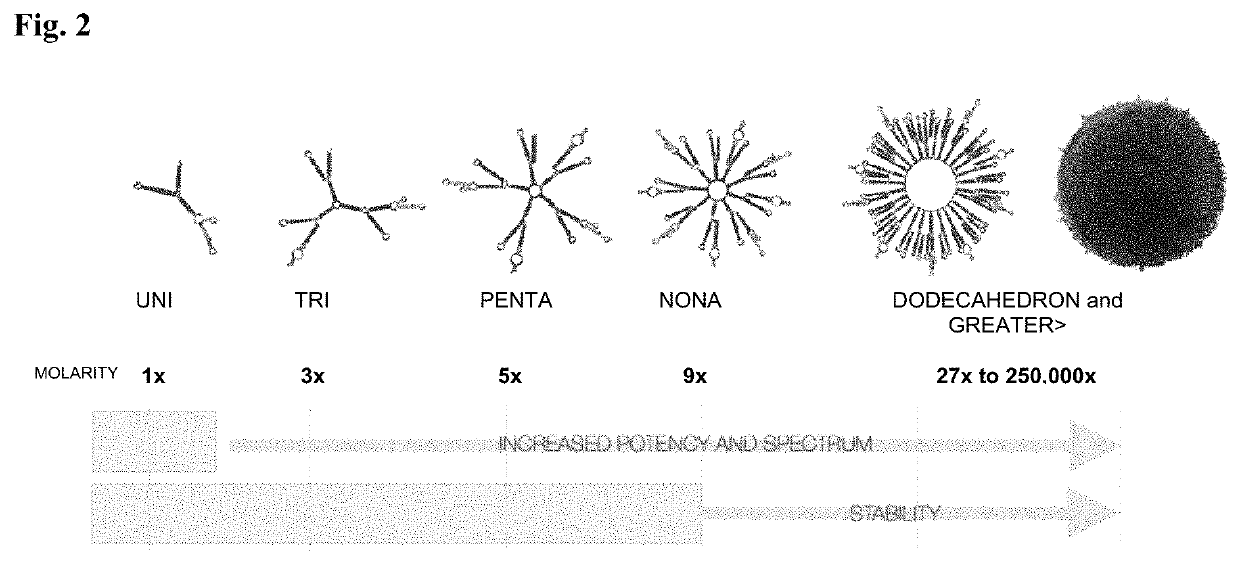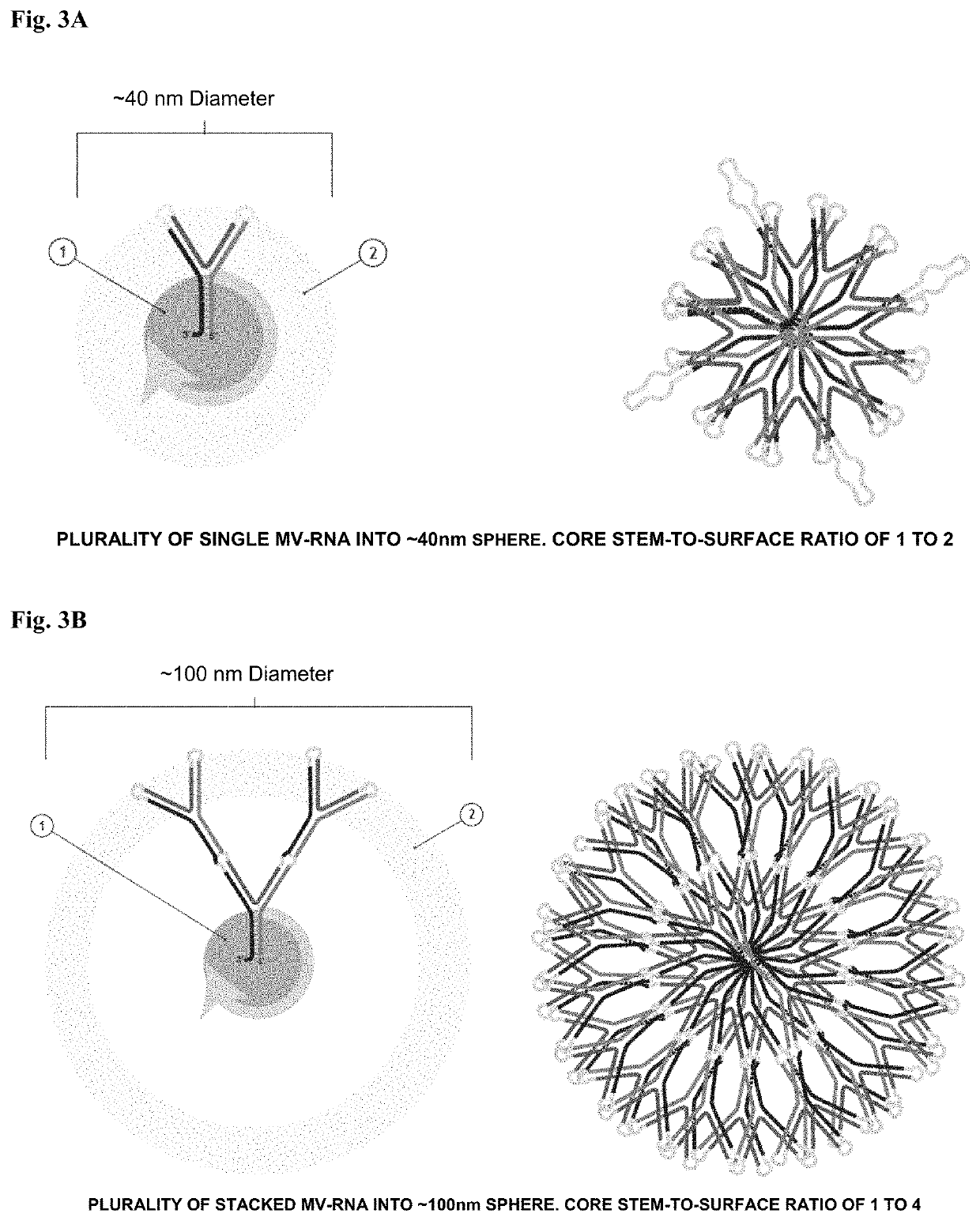Polynucleotide nanoparticles for the modulation of gene expression and uses thereof
a technology of polynucleotide nanoparticles and gene expression, which is applied in the direction of powder delivery, biochemistry apparatus and processes, drug compositions, etc., can solve the problems of lack of molarity, difficult commercial use, and rapid degradation, and achieve high trigger molarity, in vitro and in vivo production, and nuclease resistance. , the effect of precise trigger releas
- Summary
- Abstract
- Description
- Claims
- Application Information
AI Technical Summary
Benefits of technology
Problems solved by technology
Method used
Image
Examples
example 1
ing Single-Stranded Polynucleotide MV-RNA Nanoparticle for the Treatment of Human Prostate Cancer
[0197]This example describes the assembly of a nanoparticle sequence according to the invention targeting multiple genes contributing to human castration-resistant prostate cancer. Each nanoparticle utilizes both a PSMA targeting aptamer sequence for cell-specific uptake and a clathrin-pit endocytosis aptamer sequence for endosomal movement. The entire nanoparticle delivers multiple active MV-RNA RNAi triggers per endocytosis event and is scalable by increasing plurality of MV-RNA within the nanoparticle polynucleotide. Two multi-gene pathways are targeted by this example: (1) human AKT (SEQ ID NO:89), human MAP3K (SEQ ID NO:90; NM_005921), and human PLK1 (SEQ ID NO:91; NM_005030); and (2) human Androgen Receptor (SEQ ID NO:92 and SEQ ID NO:93 (variant transcripts)) / cMET (SEQ ID NO:94; X54559). Each target set can represent part or all of a nanoparticle of this invention in a wide spectr...
PUM
| Property | Measurement | Unit |
|---|---|---|
| diameter | aaaaa | aaaaa |
| diameter | aaaaa | aaaaa |
| diameter | aaaaa | aaaaa |
Abstract
Description
Claims
Application Information
 Login to View More
Login to View More - R&D
- Intellectual Property
- Life Sciences
- Materials
- Tech Scout
- Unparalleled Data Quality
- Higher Quality Content
- 60% Fewer Hallucinations
Browse by: Latest US Patents, China's latest patents, Technical Efficacy Thesaurus, Application Domain, Technology Topic, Popular Technical Reports.
© 2025 PatSnap. All rights reserved.Legal|Privacy policy|Modern Slavery Act Transparency Statement|Sitemap|About US| Contact US: help@patsnap.com



